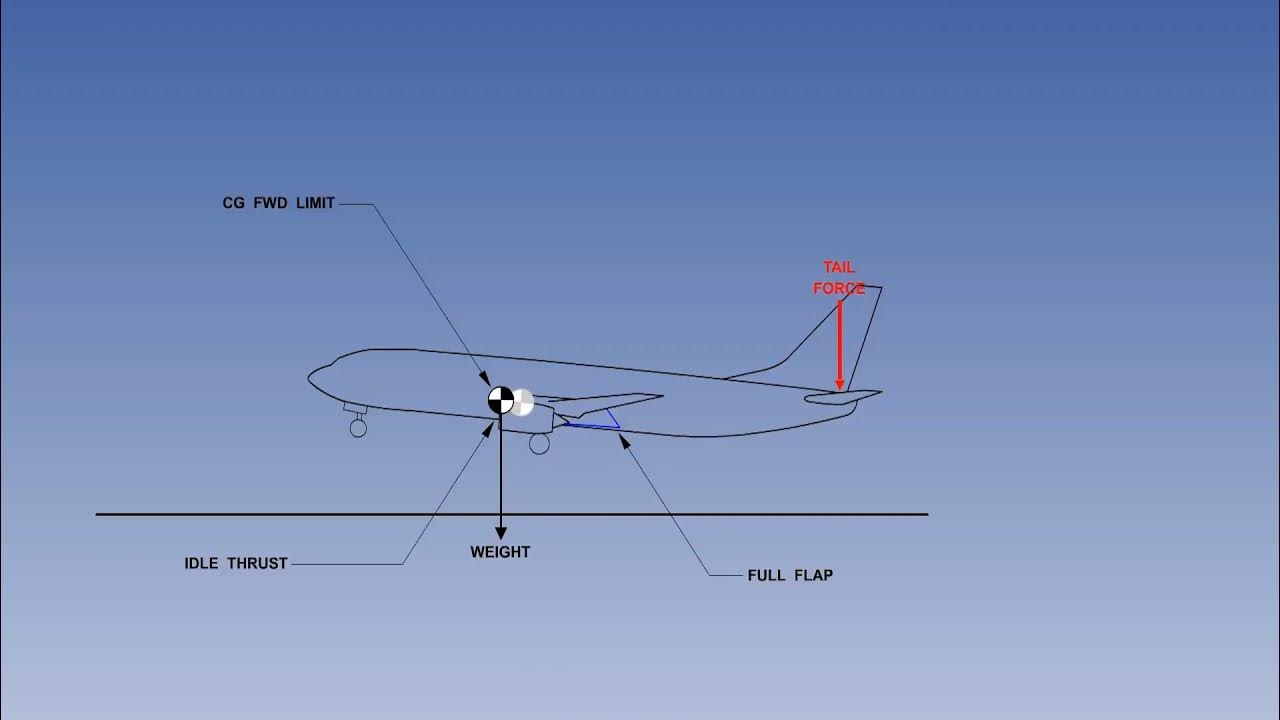Lateral Stability Of Aircraft | Aircraft Lateral Stability | Lecture 41
Summary
TLDRThis script explores the concept of lateral stability in aircraft, focusing on how sideslip generates rolling moments that affect stability. It explains the impact of wing placement, dihedral and anhedral angles, and swept wings on stability. The script also touches on the role of the fin and ventral fin in stability, and the challenges of coupled lateral and directional responses, such as spiral instability and Dutch roll, with the use of yaw dampers in jet transport aircraft.
Takeaways
- 🌀 Sideslip in an aircraft generates a yawing moment, causing the aircraft to move sideways and weather into the wind.
- 📉 The direction of the rolling moment generated by a sideslip determines the type of lateral stability: unstable, neutral, or stable.
- 🔄 Lateral stability is influenced by the aircraft's component parts, such as the wing, fin, and ventral fin, each contributing differently to stability.
- 🚀 A low-mounted wing with negative lateral static stability can be improved by incorporating dihedral, an upward angle of the wing from the horizontal.
- ✈️ High-mounted wings naturally provide positive lateral static stability due to their position, which is known as the dihedral effect.
- 📉 An aircraft with too much lateral stability from a high-mounted wing can be adjusted with anhedral, a downward angle of the wing.
- 🔄 Swept wings contribute to lateral stability through an effect similar to dihedral, especially in a sideslip situation.
- 💨 The fin's aerodynamic force in a sideslip acts above the center of gravity (CG), providing a small stabilizing moment.
- 📉 The ventral fin's contribution to lateral stability is minimal as its force acts below the CG, leading to destabilization.
- 📉 Flaps down during a sideslip reduce lateral stability because the lift components act through a shorter arm, generating smaller rolling moments.
- 🔗 In a sideslip, lateral and directional responses of an aircraft are coupled, leading to simultaneous rolling and yawing moments.
- 🛠 Jet transport aircraft, prone to Dutch roll due to their swept wings, are equipped with a yaw damper to prevent instability.
Q & A
What is the effect of an aircraft being displaced away from wings level?
-When an aircraft is displaced away from wings level, the inclination of the lift vector generates a side force causing the aircraft to move sideways through the air, a phenomenon known as sideslip.
What is sideslip and how does it relate to directional stability?
-Sideslip is when an aircraft moves sideways through the air due to a displacement away from wings level. It relates to directional stability as it generates a yawing moment, causing the aircraft to weather into the wind.
How does a sideslip angle affect lateral stability?
-A sideslip angle creates a condition where the resultant fin force generates a yawing moment towards the direction from which the airflow is coming, affecting the aircraft's lateral stability.
What determines the type of lateral stability generated by a side slip?
-The type of lateral stability is determined by the direction of the rolling moment generated by the side slip. It can be unstable, neutral, or stable based on whether the side slip generates unfavorable, no, or favorable rolling moments, respectively.
How does the wing's position on the aircraft affect lateral stability?
-The wing's position significantly affects lateral stability. A low-mounted wing without dihedral has negative lateral static stability, while a high-mounted wing or one with dihedral provides positive lateral static stability.
What is dihedral and how does it contribute to lateral stability?
-Dihedral is the upward inclination of the wing from the horizontal. It reduces the unstable contribution of a low-mounted wing by altering the airflow's effect on the wing, generating a rolling moment back towards wings level and providing positive lateral static stability.
Why might a designer choose a high wing configuration?
-A designer might choose a high wing configuration for ease of loading, as it places the aircraft lower to the ground. The high wing position also provides a natural dihedral effect, contributing positively to lateral stability.
What is anhedral and how does it affect the stability of an aircraft?
-Anhedral is the downward inclination of the wing from the horizontal. It can be used to reduce the stable contribution of a high wing if the dihedral effect provides too much lateral stability, thus ensuring the proper amount of lateral stability.
How does a swept wing contribute to lateral stability?
-A swept wing contributes to lateral stability by providing a dihedral effect. In a sideslip, the wing into the wind has less effective sweep angle, and the wing out of the wind has more, resulting in more lift on one wing and less on the other, generating a stabilizing rolling moment.
What is the role of the fin in lateral stability during a sideslip?
-During a sideslip, the fin acts as an aerodynamic force above the center of gravity (CG), generating a small stabilizing moment. It contributes to lateral stability, albeit to a lesser extent compared to the wing's influence.
What is the significance of the ventral fin's contribution to lateral stability?
-The contribution of a ventral fin to lateral stability is very small and often insignificant. Its force acts in the same direction but below the CG, which is destabilizing, but its overall impact is minimal.
How do flaps affect lateral stability during a sideslip?
-With flaps down, the inboard portion of the wing generates a larger percentage of the lift, and each component of lift acts through a shorter arm length. This results in a smaller rolling moment, reducing lateral stability during a sideslip.
What is Dutch roll and how is it related to lateral and directional stability?
-Dutch roll is a combination of rolling and yawing motions that an aircraft may exhibit due to the coupling of lateral and directional responses. It is related to the dominance of static stability types; if lateral static stability is dominant, the aircraft may suffer from Dutch roll.
Why are yaw dampers used in jet transport aircraft?
-Yaw dampers are used in jet transport aircraft to prevent Dutch roll, which is a tendency for these aircraft due to their swept wing design, affecting lateral and directional stability negatively.
Outlines

This section is available to paid users only. Please upgrade to access this part.
Upgrade NowMindmap

This section is available to paid users only. Please upgrade to access this part.
Upgrade NowKeywords

This section is available to paid users only. Please upgrade to access this part.
Upgrade NowHighlights

This section is available to paid users only. Please upgrade to access this part.
Upgrade NowTranscripts

This section is available to paid users only. Please upgrade to access this part.
Upgrade NowBrowse More Related Video

ATPL Principles of Flight - Class 17: Stability II.

How Center of Gravity Affects Flight | Tail Down Force | Aircraft Stability

ATPL Principles of Flight - Class 16: Stability I.

U1 L3 Moments Harony minis

(Part 4) Longitudinal Stability Of Aircraft | Lecture

(Part 3) Longitudinal Stability Of Aircraft | Aircraft Axles Stability | Lecture 38
5.0 / 5 (0 votes)